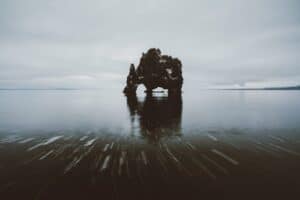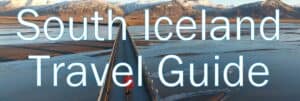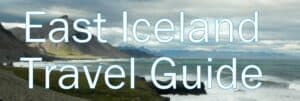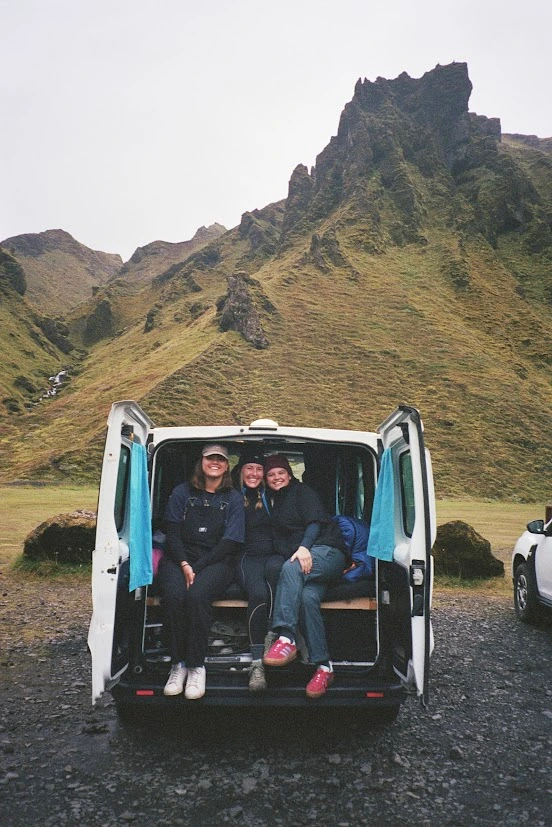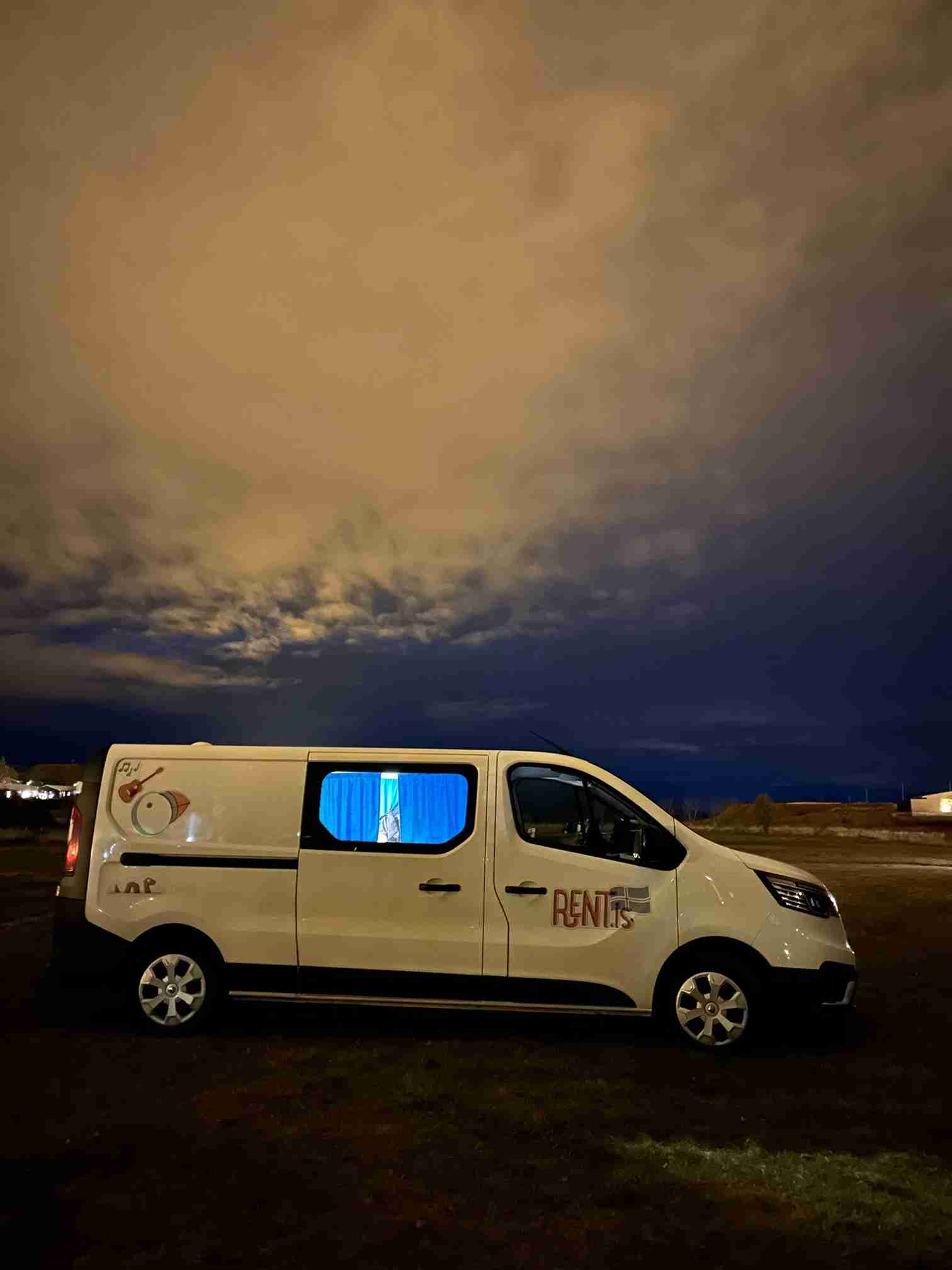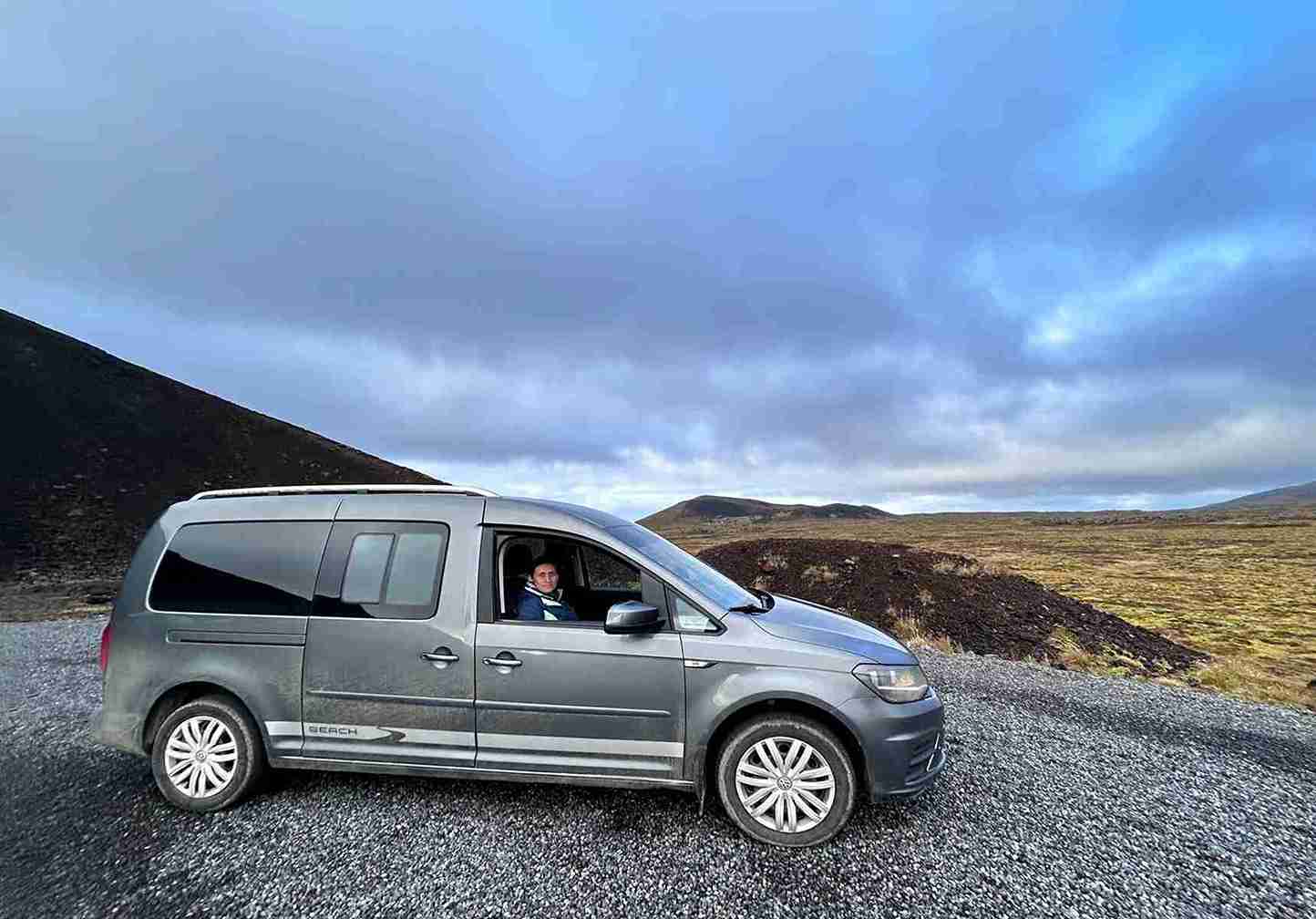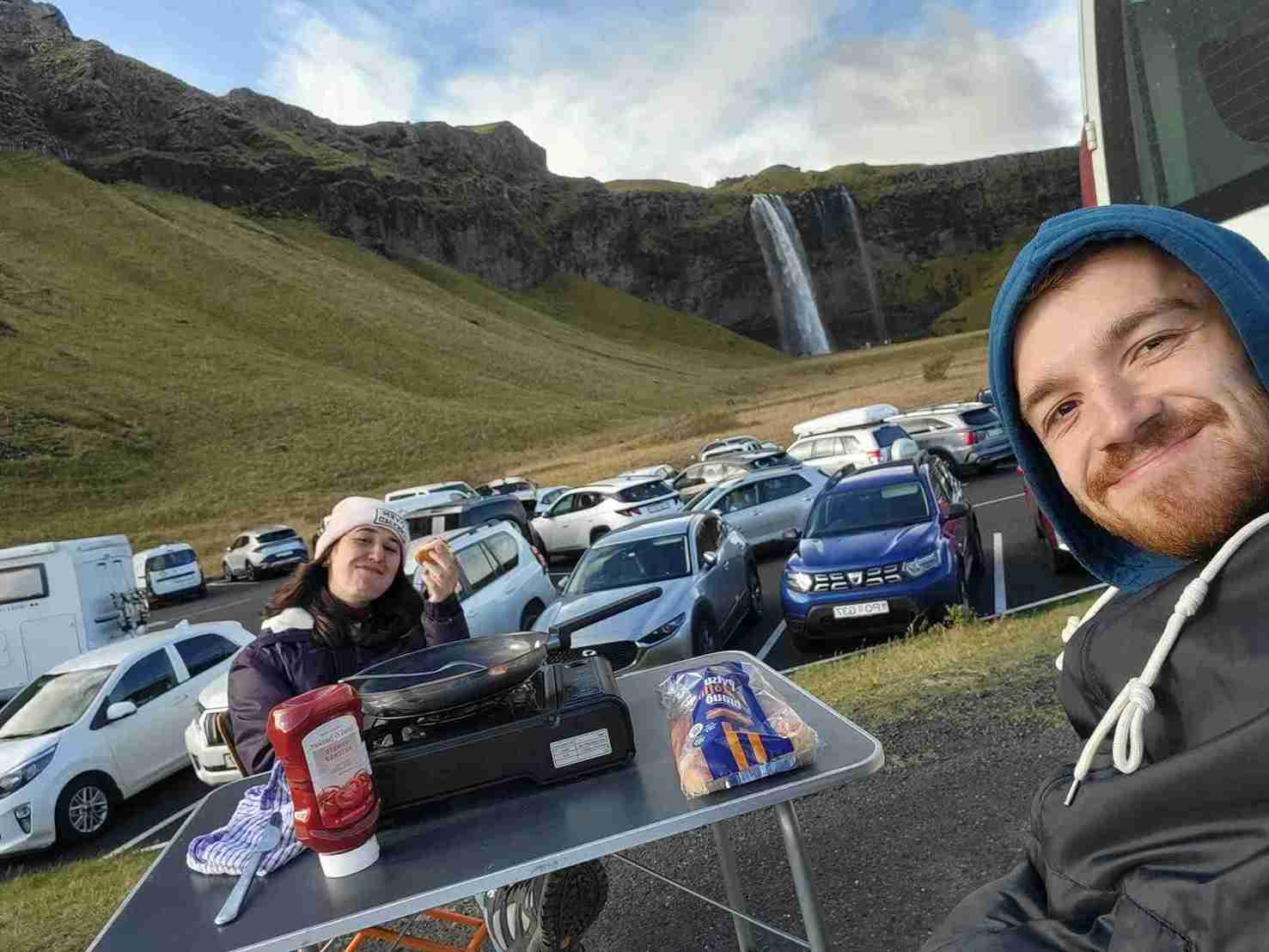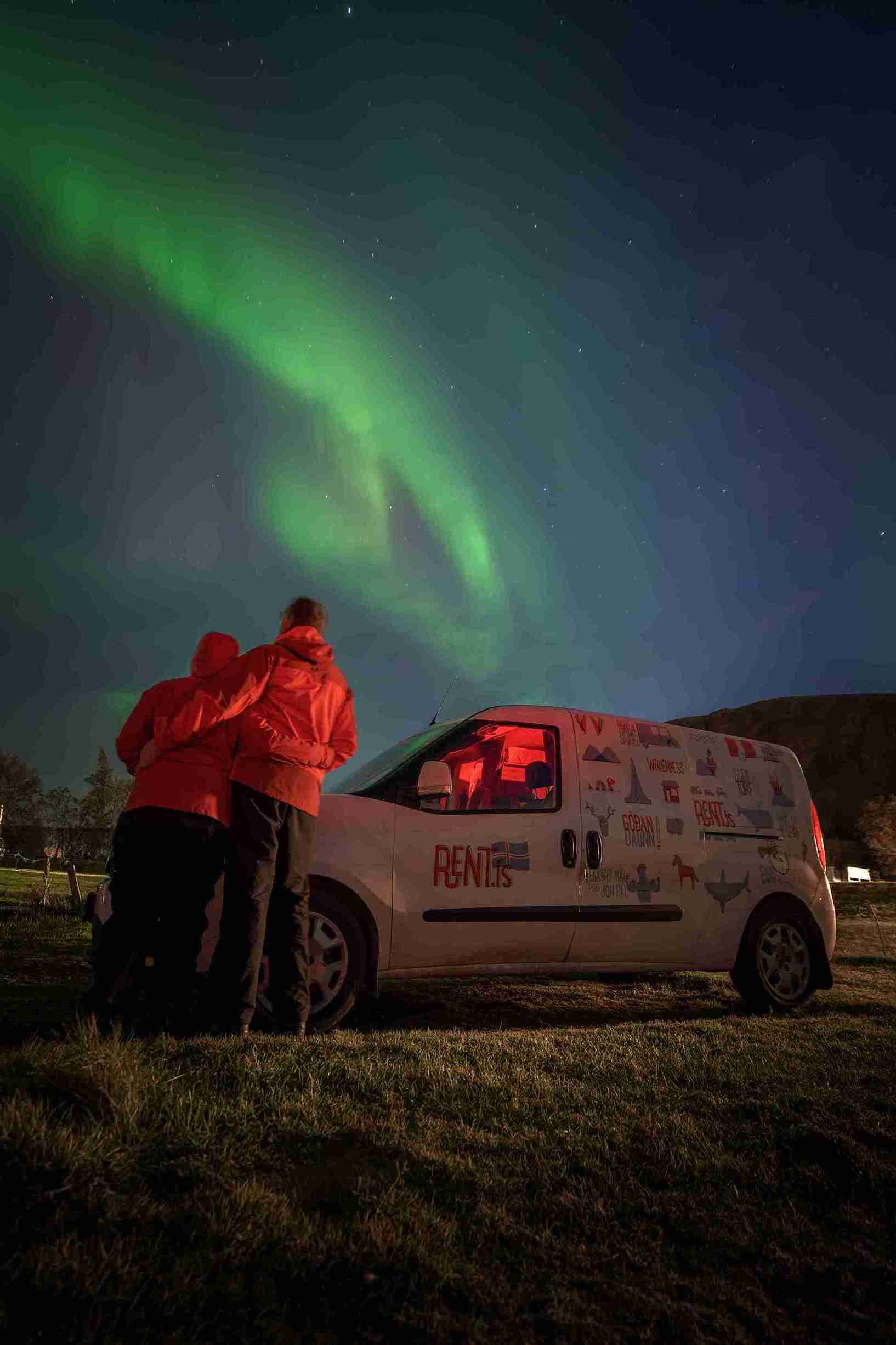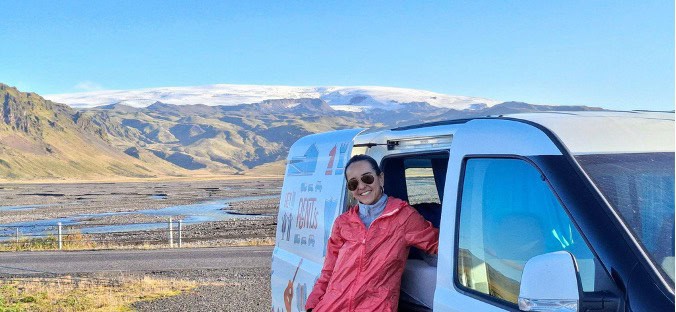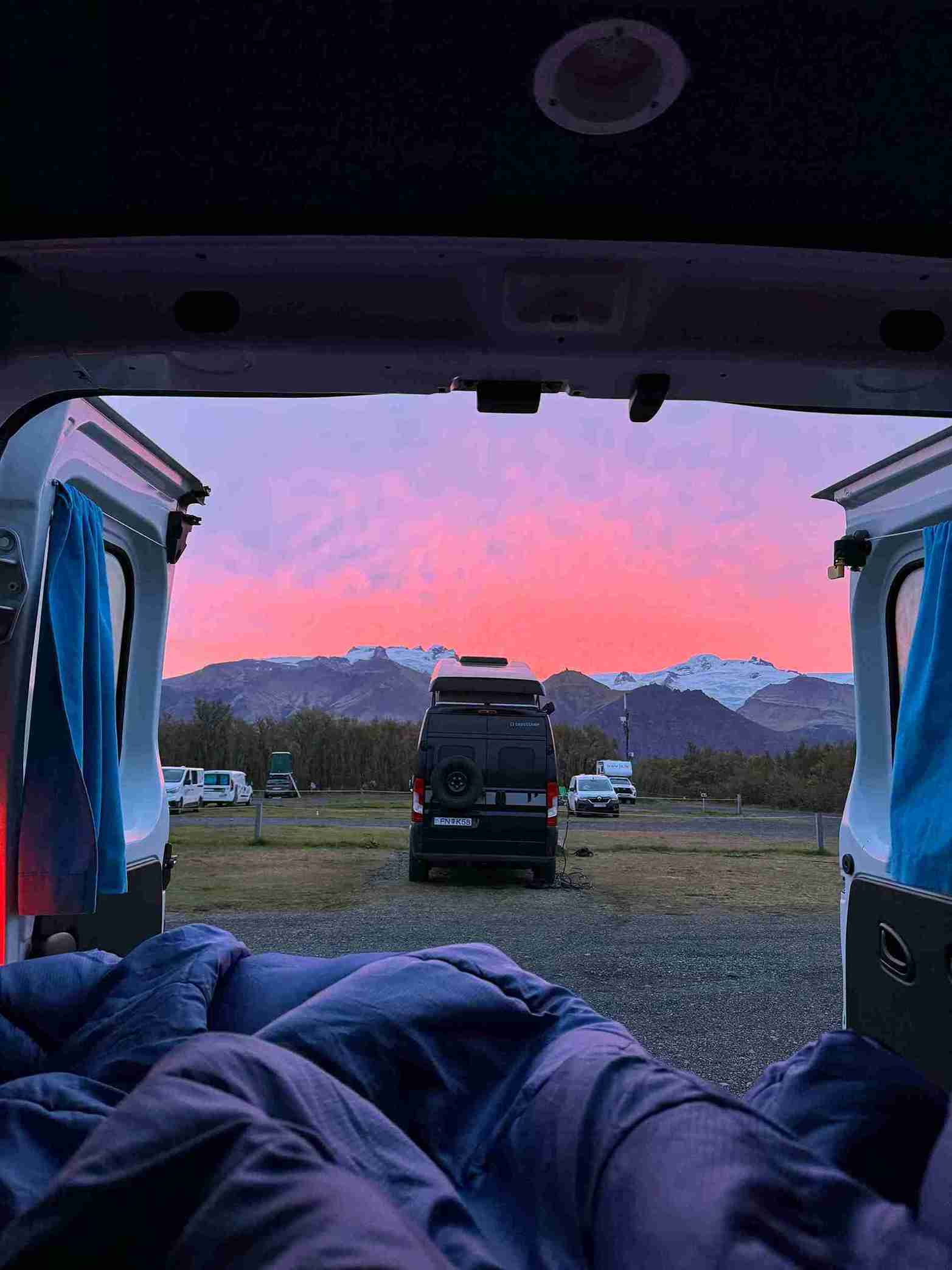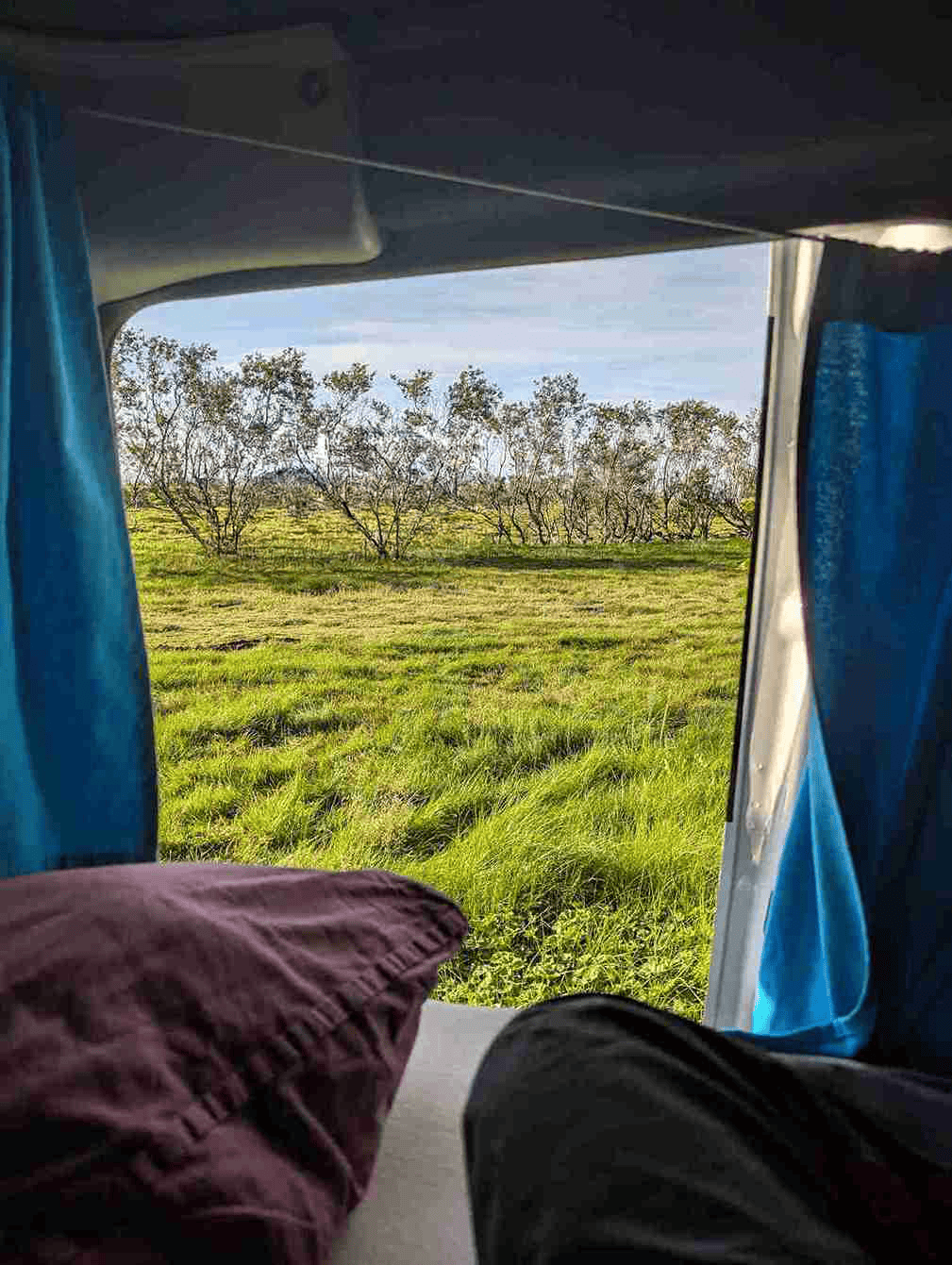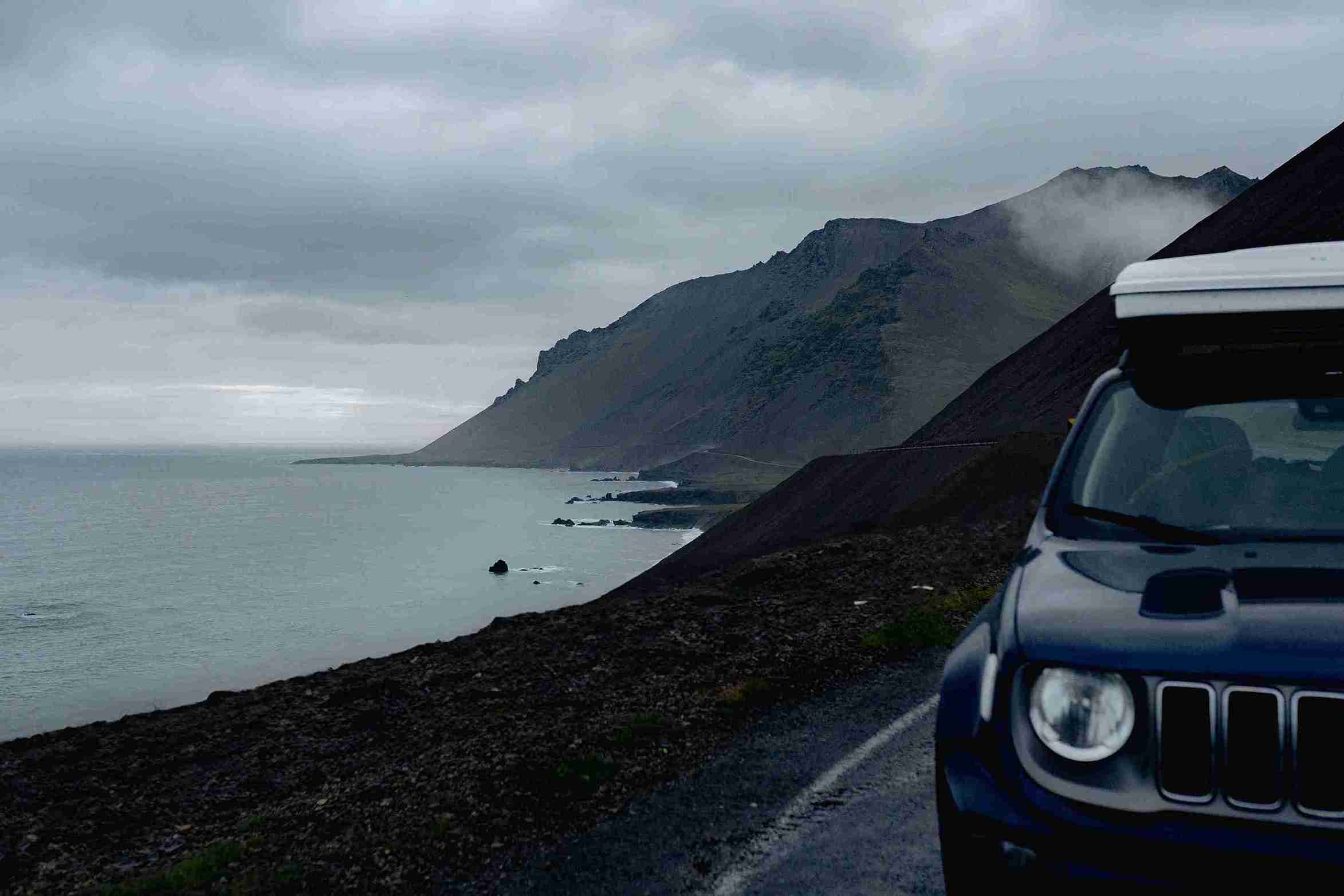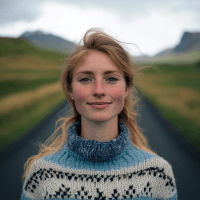Iceland is one of the most breathtaking countries in the world, but it is also one that requires flexibility in your plans. The weather can completely close roads making it nearly impossible to get to your hotel bookings! We knew that for this trip the only way to see everything we wanted to see was with a camper van.
My wife Nicole and I have traveled to Iceland twice before, so we have a decent amount of experience in getting around the country and we know how important it is to be able to follow the good weather. Our favorite time to visit is in the fall when the days are typically 10-12 hours long and the sun truly sets, giving you beautiful daytime landscapes and amazing displays of the northern lights at night.
After landing and picking up our van we checked the weather (as we always do) and quickly realized that our plans of traveling from Reykjavík to Höfn along the Southern coast would be a wet and windy couple of days. Having the camper rather than hostel or guest house reservations meant that we could completely change our itinerary at the last minute without losing money on bookings. The great thing is that in Iceland no matter what direction you drive you will encounter a landscape like you have never seen before. We decided to go North and avoid the coming storm.
We left Reykjavik early the next day to take in two of Iceland’s most incredible sites on our way to Mývatn: Kirkjufell (a 463m high mountain) and Hvítserkur (a huge dragon-like sea stack). We were completely blown away by how much the landscape changes and morphs before your eyes. In just a short drive we encountered raging triple waterfalls and the calm sea. We ended our day with the last moments of light photographing Goðafoss and then headed to our campsite for pizza and wine, the small Icelandic forest glowing a beautiful gold and orange around us.
We woke early again our third day to soak in the blue lagoon of Mývatn. Less known and less traveled than the Blue Lagoon near Keflavik we found it to be a great way to relax and enjoy ourselves before beginning another long day of driving. Our goal was to make it to the eastern coast by nightfall so that we could see our favorite part of the country during the sunset. The drive from Mývatn to Höfn is on one of the most inspiring drives we have ever done. As we neared the eastern shores we descended a perilous road covered in fog, driving out of the clouds and into a valley we found ourselves surrounded by mountains that looked like stairways carved for giants with waterfalls pouring from every cliff.
At sea level the road spiraled out in front of us along the Atlantic, almost touching the ocean before shooting back up to a high overlook of looming Mt. Vestrahorn where we could see black sand beaches for seemingly endless kilometers. We made it to our campsite in Höfn on the last rays on sunlight and went into town to get langoustine for dinner. Cooking breakfast and lunch in our camper van kitchen is fun but after the hours of travel it just felt right to have a drink and eat the local delicacy (similar to lobster) that the area is famous for.
It was some of the best we’ve ever had and as we came outside the Aurora made an appearance just long enough for us to take a couple of pictures! The lights were something we would have definitely missed had we been sleeping cozily indoors.
Our last day we awoke to another storm heading our way, so we decided to pack in another ambitious day of travel: Stokkness, Jökulsárlón, Reynisdrangar, and Dyrhólaey.
To think that all of these amazing locations can actually be seen in one day is mind boggling. The black dunes of Stokkness in the shadow of Vestrahorn and the glacial lagoon of Jökulsárlón (one of the worlds’ most awe-inspiring places) are little more than an hours drive apart and the transformation is unreal. Standing just feet away from ice that is millions of years old, and a blue as deep as sapphires, is indescribable. Words and photos will do nothing to just being there for a moment, and we take as many of these moments as we can. The wind whipping off the glacier, carrying the cold with it, leaves us shivering but still standing there watching the ice float and race through the water.
Then we are off again driving through the alien landscape of black sand, rivers as slender as fingers running down from distant glaciers until we are surrounded by moss and then mountains once more, driving slowly to the top of Dyrhólaey for sunset. I don’t know if I have stood anywhere where you can see and feel what has shaped Iceland as easily as the top of Dyrhólaey: the black sand beaches below stretch as far West as the eye can see, the sea stacks of Reynisdrangar dominate the East, and the incredible sea arch is directly in front of you while wind blows with gusts at 20-30 meters per second. The waves on the beaches reflect the blue and purple sky, looking like paint brush strokes as they come in and recede again and again. We know it’s our last day so instead of running right back to the camper we linger, lean into the wind, and take a couple more photos to remember the trip by.
After the sun has set but before the light has left we make our way back down to the ring road, and drive the rest of the way to Hafnarfjörður to get a hot meal and a beer before falling asleep one last night.
It was an intense traveling schedule, but since we had no hotel room to pack up and switching from camping to driving was so easy we managed the whirlwind pace with ease. We’re already planning our next trip back!
Read more: The Ring road clockwise
Happy Camping! #CamperStories
Iceland Travel Guides
If you like what you see, please subscribe to our YouTube channel!







